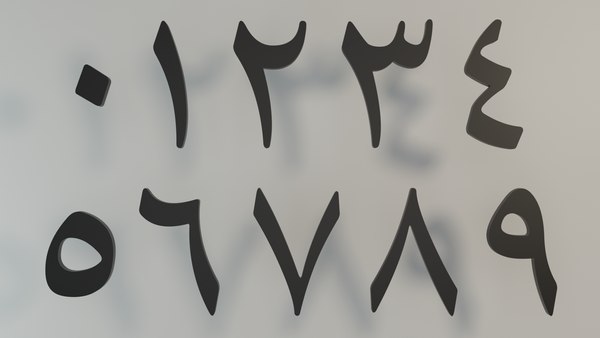A guide to Arabic numbers

The most common obstacle that native English speakers face when learning Arabic is the language’s right-to-left (RTL) writing system. The second most common obstacle is that, Arabic utilizes two different writing systems for numbers (North African countries like Morocco, Algeria, and Tunisia are an exception, they use regular numbers). When approaching numbers in an Arabic text, many become confused at how to read and interpret them. But fear not, this simple guide should solve that problem in no time.
This article uses a series of examples taken from real-world texts to show how numbers frequently appear in Arabic documents, along with our explanation of what is happing.
Arabic Numerals Are Technically Not Arabic
First, let’s understand the two different sets of numbers used in Arabic texts. Both numeral systems were based on the numeric system developed in India during the early Middle Ages. These numbers which are – confusingly – known as “Hindi” numerals in the Arabic language, became very popular throughout the Islamic world from the 9th century on, and are still in use today in the Arab world.
The numbers English speakers use every day, known as Arabic numerals, were developed in North Africa, (around where currently Morocco and Algeria are), during the 10th century. They made their way into Europe through Arab scholars in Al-Andalus (modern-day Andalusia in Spain), hence they are called Arabic numerals.
This image shows the differences between the Hindi and Arabic numeral systems:

So ironically, the numbers that are used in the rest of the world are Arabic numbers, and what is used in the middle east are Hindi numbers.
In general writers usually stick with one system or the other, sometimes you will see both numerical systems within the same document, as shown below in Example 1. This can be the result of carelessness, intentional choice, or a technical word processing glitch (the bane of every Arab linguist). We do not recommend mixing the two systems, as the inconsistency can be confusing.

Example 1: Arabic and Hindi numbers used in a single document
Direction
With this in mind, we can now understand how these numbers are meant to be read. Though Arabic words are written and read in RTL (right-to-left) directionality, numbers are on the opposite are read left-to-right (LTR), just as they are in English. In Example 2 below, the circled numbers should be read exactly as you would read them in English.

Example 2: Arabic numbers display left-to-right when embedded in Arabic text
The next example shows how even when the Hindi numbers system, the LTR (Left-to-right) directionality still applies. You should still read them as you would read regular numbers.

Example 3: Hindi numbers read Left-to-Right when embedded in Arabic text
Thus, reading numbers in Arabic is no different from English. This should relieve you of some headaches that you will inevitably face when dealing with Arabic.
The following is a list of other rules for reading numbers in Arabic that you should keep in mind when examining your source file:
Decimals
In the US, they use a comma (,) to break up large numbers into hundreds and a period (.) to signify the decimals. In general, the same applies for Arabic, though hundreds are not usually broken up. Example 4 shows how, as in English, Arabic numbers and their decimals should still be read (LTR)

Example 4: Decimals read left-to-right
Fractions:
This is another case in which the numbers are read LTR, with the numerator on the left of the slash (/) and the denominator on the right, as shown in Example 6.

Example 6: Fractions, numerator on left, denominator on right
Percentages:
The percent symbol (%) goes to the left of the numbers, as shown in Example 7:

Example 7: Percent symbol displayed on the left
Dates
In this case, while the numerical units are read LTR, the order in which they are read is RTL, as shown below in Example 8. The historical range shown below would be interpreted as (780-850):

Example 8: Date ranges read right to left, but the numbers themselves are read left-to-right
The same applies for calendar dates, which start with the day to the right, the month in the middle, and then the year to the left, as seen in Example 9 below:

Example 9: Calendar dates
The circled example would then begin from the numerical unit from the right, though the numbers themselves are read starting from the left: 13/06/1430 AH. This is also the case when reading and rendering legal document serial numbers, which often contain both letters and numbers:

Example 10: Dates with codes
In the case of this Royal Decree, the order of the serial code would be read RTL, i.e. starting with the letter miim or “M”, and then the number “58” (which would be read LTR). The final product would read: Royal Decree No. M/58.